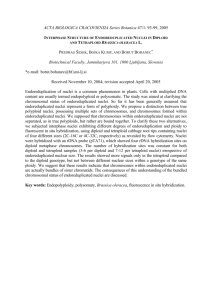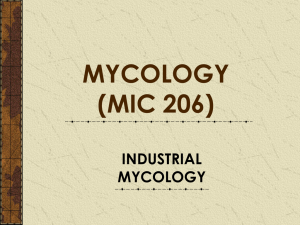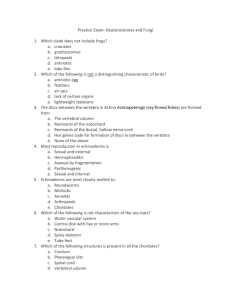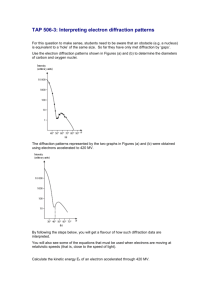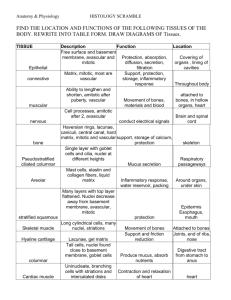L.13-G.Biology Mycology D.Ebtihal Muiz Parasexual Cycle in
advertisement
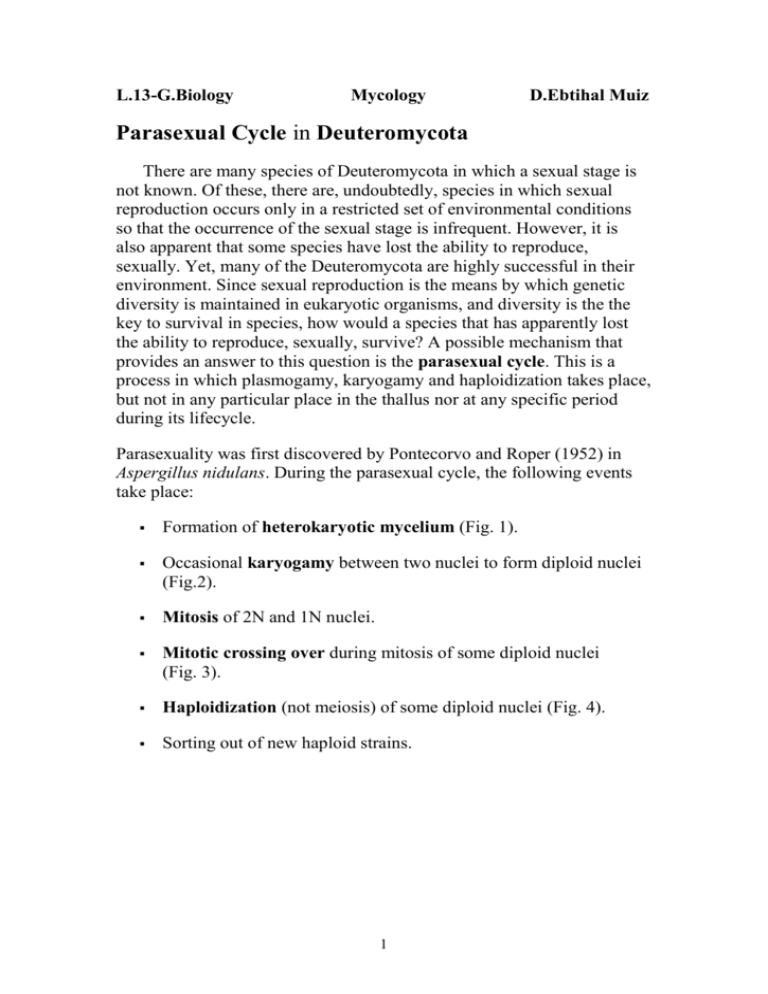
L.13-G.Biology Mycology D.Ebtihal Muiz Parasexual Cycle in Deuteromycota There are many species of Deuteromycota in which a sexual stage is not known. Of these, there are, undoubtedly, species in which sexual reproduction occurs only in a restricted set of environmental conditions so that the occurrence of the sexual stage is infrequent. However, it is also apparent that some species have lost the ability to reproduce, sexually. Yet, many of the Deuteromycota are highly successful in their environment. Since sexual reproduction is the means by which genetic diversity is maintained in eukaryotic organisms, and diversity is the the key to survival in species, how would a species that has apparently lost the ability to reproduce, sexually, survive? A possible mechanism that provides an answer to this question is the parasexual cycle. This is a process in which plasmogamy, karyogamy and haploidization takes place, but not in any particular place in the thallus nor at any specific period during its lifecycle. Parasexuality was first discovered by Pontecorvo and Roper (1952) in Aspergillus nidulans. During the parasexual cycle, the following events take place: Formation of heterokaryotic mycelium (Fig. 1). Occasional karyogamy between two nuclei to form diploid nuclei (Fig.2). Mitosis of 2N and 1N nuclei. Mitotic crossing over during mitosis of some diploid nuclei (Fig. 3). Haploidization (not meiosis) of some diploid nuclei (Fig. 4). Sorting out of new haploid strains. 1 Figure 1. Heterokaryon formation refers to the condition by which genetically different nuclei are associated in a common cytoplasm. The most common way in which this can occur is by anastomosis (fusion) of genetically different hyphae (see Fig. 1a on left). Another means by which genetically different nuclei may enter a common protoplasm is by mutation of one or several nuclei. We will refer to the former in this description of parasexuality. Following initial fusion of hyphal cells, to form a genetically different cell, mitotic division perpetuates the cell and mycelium that is made up of genetically, different nuclei is formed. Figure 2. Karyogamy and mitotic division of diploid nuclei: Following heterokaryon formation, fusion of some haploid nuclei that are genetically the same will fuse as well as those that are genetically different. The latter will result in heterozygous diploid nuclei. It is estimated that there is one heterozygous diploid nucleus will occur per one million haploid nuclei (Pontecorvo, 1958). Figure 3. Mitotic Crossing Over: Figs. 3a-b. During prophase of mitosis, mitotic crossing over can occur between chromatids of homolous chromosomes and may produce a unique genetic recombinant. Fig 3c. Recombinant chromosomes separate, during anaphase, and give rise to nuclei that are genetically different from existing nuclei in protoplasm. This is also a rare event, 2 occurring in diploid nuclei, once, in 500 mitoses. Figure 4. Haploidization (not meiosis) of diploid nuclei. During mitosis, errors are common. Diploid nuclei often form one nucleus with three copies of one chromosome (2N+1) and the other with one copy of one chromosome (2N-1). In the latter nucleus, the continual, sequential loss of chromosomes with two copies can occur to eventeually give rise to a haploid nucleus. When haploidization occurs in heterozygous diploids, the resulting haploid will result in a new genetic combination. While the parasexual cycle appears to be a viable mechanism by which genetic recombination occurs, many mycologist believe that it does not play a role in maintaining genetic diversity in fungi that have lost their ability to reproduce, sexually. Instead, this has been looked upon as a laboratory phenomenon and that heterokaryon formation, in nature, is not a common event. Thus, the parasexual cycle must also be a rare event. The Deuteromycota (Greek for "second fungi") were once considered a formal phylum of the kingdom Fungi. The term is now used only informally, to denote species of fungi that are asexually reproducing members of the fungal phyla Ascomycota and Basidiomycota. There are about 25,000 species that have been classified in the deuteromycota. Fungi producing the antibiotic penicillin and those that cause athlete's foot and yeast infections are imperfect fungi. In addition, there are a number of edible imperfect fungi, including the ones that provide the distinctive characteristics of Roquefort and Camembert cheese. Emericella nidulans. Phylogeny and taxonomy Phylogenetic classification of asexually reproducing fungi now commonly uses molecular systematics. Phylogenetic trees constructed from comparative analyses of DNA sequences, such as RNA, or multigene phylogenies may be used to infer relationships between 3 asexually reproducing fungi and their sexually reproducing counterparts. With these methods, many asexually reproducing fungi have now been placed in the tree of life] However, because phylogenetic methods require sufficient quantities of biological materials (spores or fresh specimens) that are from pure (i.e., uncontaminated) fungal cultures, for many asexual species their exact relationship with other fungal species has yet to be determined. Under the current system of fungal nomenclature, teleomorph names cannot be applied to fungi that lack sexual structures. Classifying and naming asexually reproducing fungi is the subject of ongoing debate in the mycological community. Common species Tolypocladium inflatum → from which we obtain the immunosuppressant ciclosporin; Penicillium chrysogenum Penicillium griseofulvum Penicillium roqueforti Penicillium camemberti Other species of Penicillium are used to improve both the taste and the texture of cheeses Aspergillus oryzae[4] Aspergillus sojae[5] Aspergillus niger[6] Cladosporium resinae Lecanicillium sp. → these produce conidia which may control certain species of insect pests Other entomopathogenic fungi, including Metarhizium and Beauveria spp. Pochonia spp. are under development for control of Nematode pests. 4
